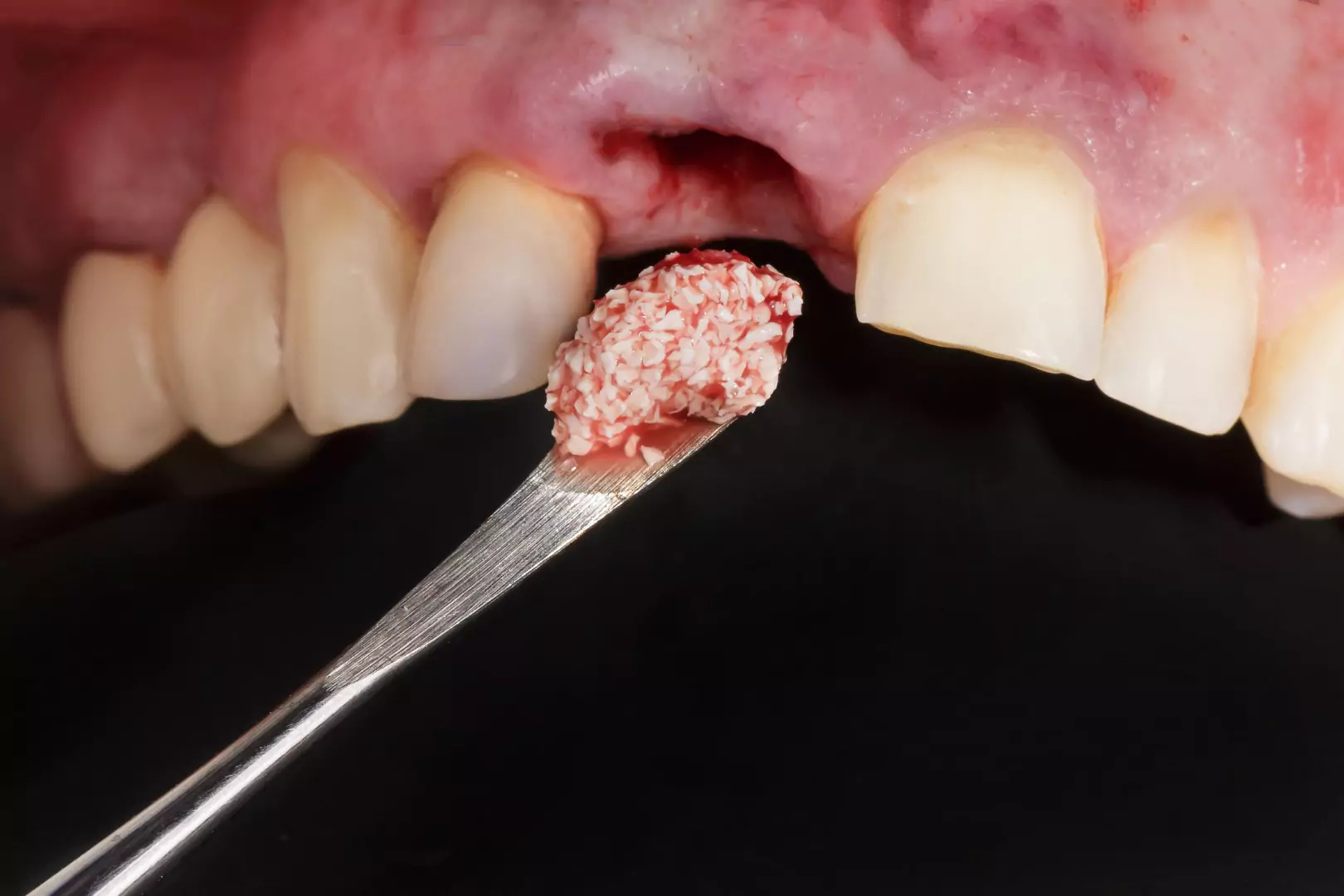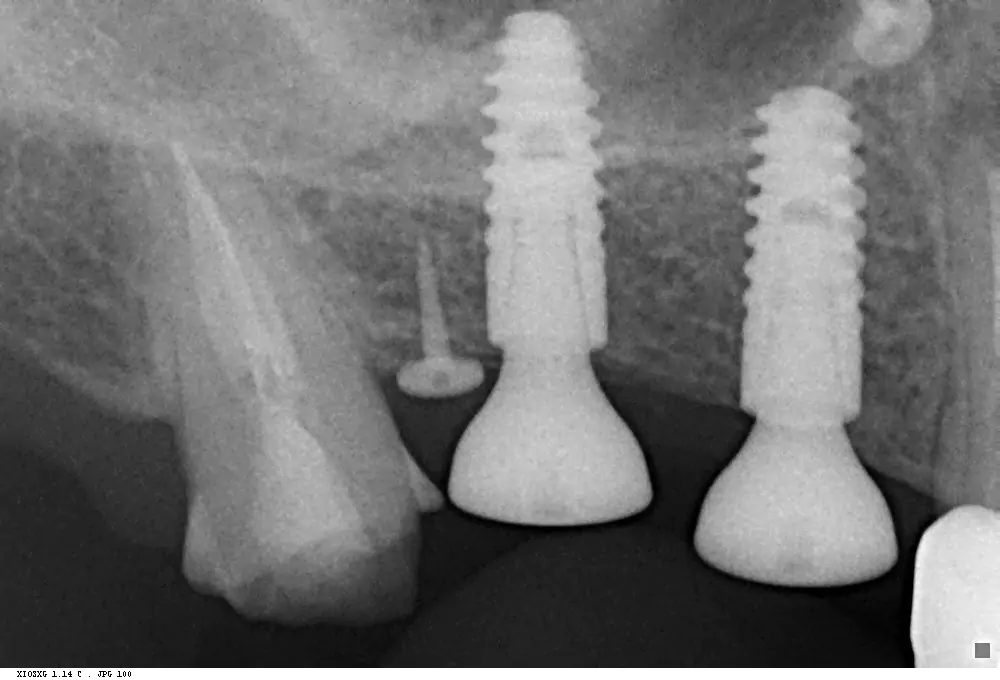Dental Implants
Dental Bone Grafting in Pune
All Services
A dental bone graft is a procedure that helps restore and strengthen the jawbone in areas where it has become weak or shrunk due to bone loss. It involves adding more bone material to those areas.

The bone material used for the graft can come from different sources. It can be taken from your own body, like another part of your jaw or your hip (autogenous). Alternatively, it can be obtained from a human tissue bank (allograft) or an animal tissue bank (xenograft). In some cases, synthetic materials made in a lab can also be used (alloplast).
The purpose of the bone graft is to provide support and stability for dental implants or other dental treatments. It helps create a solid foundation for the replacement teeth by filling in the areas of bone loss. This allows the implants or other dental devices to be securely placed and function properly.
The choice of bone graft material depends on various factors, such as the extent of bone loss, your overall health, and the recommendation of your dentist. We will assess your situation and determine the most suitable type of bone graft for your specific needs.
How Does a Bone Graft Work?
After the bone graft is placed in your jaw, it creates a framework or support for your body to naturally repair and grow new bone. It’s like a scaffold that guides your own bone tissue to regenerate and fill in the empty space.

Sometimes, we may use a technique called platelet-rich plasma (PRP) along with the bone graft. PRP is made from a small amount of your own blood. It contains special components called platelets that help in healing and tissue regeneration. When PRP is combined with a bone graft, it can enhance the healing process and improve the success of the graft.
To create PRP, a small sample of your blood is taken and processed in a special machine to separate the platelets from other blood components. The concentrated platelets are then mixed with the bone graft material or applied directly to the treatment area. The platelets release growth factors that stimulate tissue repair and attract cells responsible for bone formation.
By combining a bone graft with PRP, we aim to accelerate the healing process and promote the growth of new bone in the grafted area. This can increase the chances of a successful outcome and help you achieve a stronger and healthier jawbone. After assessing your situation in detail, we will determine if combining PRP with a bone graft is appropriate for your specific situation.
A dental bone graft is usually needed for people who have lost some of the bone in their jaw. This procedure may be suggested if:
- You need to have a tooth removed.
- You want to replace a missing tooth with a dental implant.
- You have areas where the bone has been lost due to gum disease.
Let’s look at each situation in more detail:
1. Tooth extraction: When a tooth is removed, the surrounding bone may also be affected. To preserve the bone and prevent future problems, a bone graft may be recommended at the time of extraction.
2. Dental implant: If you’re missing a tooth and want to get a dental implant, a bone graft may be necessary. The implant needs a strong foundation, so a graft can be done to add bone in the area where the implant will be placed.
3. Gum disease: Advanced gum disease can cause bone loss around the teeth. If you have areas with significant bone loss, a bone graft can help restore the bone and support the teeth.
It’s important to note that the need for a dental bone graft will depend on your specific dental condition. Your dentist or oral surgeon will evaluate your situation and recommend a bone graft if they determine it is necessary to ensure the success of the dental treatment and improve your oral health.
Different Procedures for Bone Grafting

1. Socket preservation: When a tooth is extracted, a socket preservation graft is placed immediately afterward. This graft fills the empty space left by the missing tooth, preventing the surrounding area from collapsing inward. It helps maintain the shape and structure of the jawbone, preparing it for future dental treatments like implants or dentures.
2. Ridge augmentation: If your teeth have been missing for a while, the jawbone that supports them may have become thinner. Ridge augmentation is a procedure that adds width and volume to the jawbone, making it stronger and thicker. This helps create a stable foundation for dental implants or other restorative options to replace the missing teeth.
3. Sinus lift: The maxillary sinuses are located above the upper back teeth. When those teeth are missing, the sinuses can drop down and occupy the empty space. If dental implants are planned for that area, the sinus lift procedure is performed. It involves lifting the sinus back to its original position and placing a bone graft underneath it. This creates a solid base for the future placement of dental implants.
4. Periodontal bone graft: Gum disease can cause infection and erosion of the bone that supports the teeth. This can lead to loose teeth and instability. A periodontal bone graft is a procedure where grafting material is placed around an existing tooth affected by gum disease. It helps reduce tooth mobility and provides additional support to prevent further bone loss.
In most cases, a dental bone graft needs time to heal before a dental implant can be placed. The length of recovery varies from person to person. In rare cases, it may be possible for a dentist to perform a bone graft and place a dental implant simultaneously. However, this decision is made on an individual basis, taking into account the specific circumstances and needs of each patient.
Before and After Treatment






